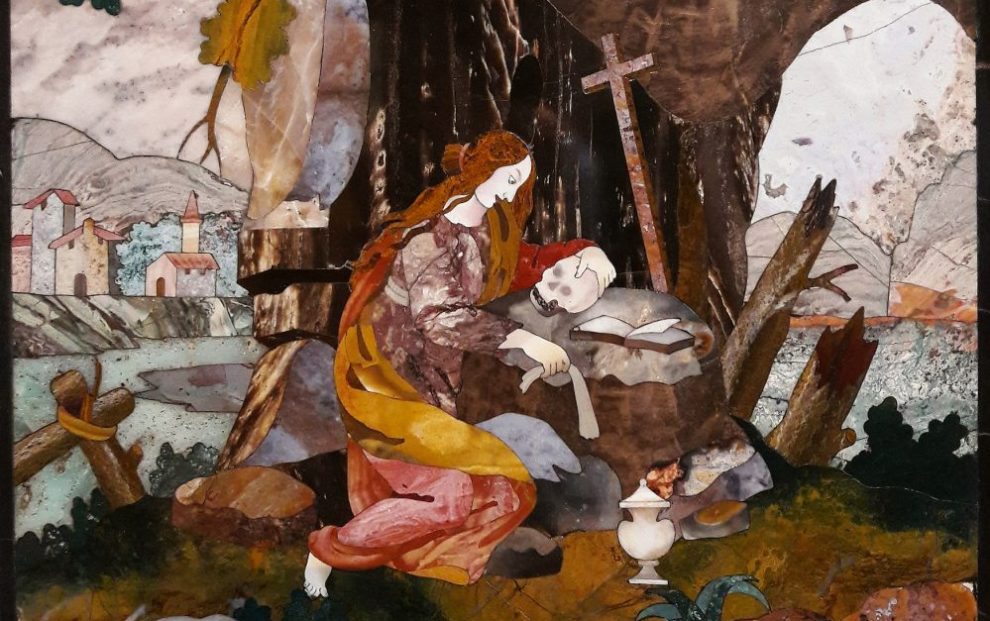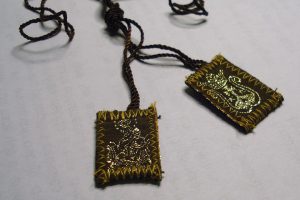The popularity of The Davinci Code has spawned endless speculation about whether there’s a kernel of truth in this work of fiction: Did Jesus and Mary Magdalene have a “relationship” in the romantic sense?
While there’s nothing in scripture that would support this fantasy, rumors about this important gospel woman are nothing new. She’s been called everything from “reformed prostitute” to “repentant sinner.” None of these is the Magdalene of the gospels, and it’s there we must look if we want to seek the truth about her.
In the gospels of Mark and Matthew it is not until the crucifixion scene that Mary appears (Mark 15:40; Matthew 27:55-56). Just after Jesus breathes his last, Mark says, “There were also women looking on from the distance; among them were Mary Magdalene [. . .] These used to follow [Jesus] and provided for him when he was in Galilee” (15:40-41).
These lines reveal a significant presence of ministering women among Jesus’ disciples from the beginning. Mary Magdalene is always at the head of the list, indicating her leadership. The verb “had been following” is the same verb used of Peter, James, John, Levi, and Matthew, who left all to follow Jesus when he called them. And like the men, the women’s discipleship is manifested in ministry. The Greek verb for “provided for” has a wide variety of ministerial connotations: leadership (Luke 22:26), apostolic ministry (Acts 1:25), ministry of the table (Acts 6:2), ministry of the Word (Acts 6:4), and financial ministry (Luke 8:3).
While Mark and Matthew do not specify the particular ministry Mary Magdalene and the other women did, Luke does. He tells of Jesus journeying from one town and village to another, accompanied by the Twelve and many women, some of whom had been cured of evil spirits and infirmities: “Mary, called Magdalene, from whom seven demons had gone out, and Joanna, the wife of Herod’s steward Chuza, and Susanna, and many others who provided for them out of their resources” (Luke 8:2-3).
Luke provides an important detail about Mary and her companions’ relationship to Jesus: It is the women who are financing the endeavor. “Resources” means monetary resources, and the Greek test makes it clear that the money belongs to the women. The gospels, however, do not tell us where the women got their money.
Whatever Mary’s role was during Jesus’ ministry, all the gospels agree that she followed Jesus to Jerusalem, witnessed his Crucifixion, saw where he was buried, and was the first to find the tomb empty. In Matthew and John’s accounts, she is the first to see the risen Christ.
In John’s version (20:11-18), Mary searches and searches until she sees Jesus himself, who calls her by name and commissions her to announce the good news to the other disciples. He entrusts her with the message that he is now to be found in the gathered community of believers, not in the individual earthly being she once knew (20:17).
The portrait of Mary that emerges from the gospel traditions is that of a faithful disciple who journeyed and ministered with Jesus, who stayed with him through his final hours, and who was first to encounter him risen and announce the news to the others. Yet while there is not a single hint in the gospels that Mary had been a sinner, much less a prostitute, this image still predominates over that of “apostle to the apostles” in popular imagination.
In many ways, the search for the real Mary Magdalene mirrors the search for women’s rightful identity as apostles, preachers, presiders, teachers, and leaders in today’s church. Her feast day, July 22, is a good occasion to celebrate the search for the real Mary Magdalene.
This article also appears in the July 2005 issue of U.S. Catholic (Vol. 70, No. 7, page 43). Click here to subscribe to the magazine.
Image: Wikimedia Commons















Add comment